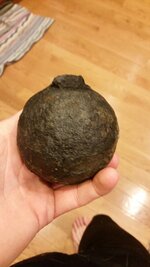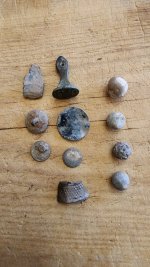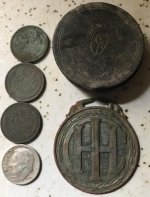Patriot Relics
Silver Member
- Feb 6, 2014
- 3,709
- 5,612
- 🥇 Banner finds
- 5
- Detector(s) used
- CTX-3030, Deus XP II
- Primary Interest:
- Relic Hunting
Hey guys,
I am in uncharted territory with this one... while I have found many musket balls in the past, I have never recovered a cannonball. The diameter is approximately 3.5 inches and it weighs in just under 3 lbs. There is a small rectangular section protruding from the side..maybe a fuse? I found the piece on the beach near an old frontier fort. Can anyone identify the era and type of this artillery piece and how best to preserve it...and should I be concerned that it still may contains explosive.


I am in uncharted territory with this one... while I have found many musket balls in the past, I have never recovered a cannonball. The diameter is approximately 3.5 inches and it weighs in just under 3 lbs. There is a small rectangular section protruding from the side..maybe a fuse? I found the piece on the beach near an old frontier fort. Can anyone identify the era and type of this artillery piece and how best to preserve it...and should I be concerned that it still may contains explosive.





 Nice find
Nice find








